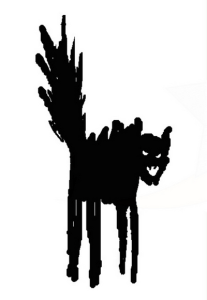*Originally posted on October 31, 2011
 Did you know that a trademark may be refused registration because it is deceptive? Yes, indeed, the “deceptively misdescriptive” doctrine is an interesting — if not tongue-twisting — principle of trademark law, which occasionally rears its head. Here’s how it works in a real-life case. Retail Brand Alliance, Inc. (i.e., Brooks Brothers) sought to register the trademark BLACK FLEECE for apparel such as belts, blouses, boots, including vests and — this is important — “not made of fleece fabric.” The trademark examiner refused registration of the mark under section 2(e)(1) of the Trademark Act on grounds that the applicant’s mark is deceptively misdescriptive of its goods. Brooks Brothers appealed the decision to the Trademark Trial and Appeal Board (TTAB).
Did you know that a trademark may be refused registration because it is deceptive? Yes, indeed, the “deceptively misdescriptive” doctrine is an interesting — if not tongue-twisting — principle of trademark law, which occasionally rears its head. Here’s how it works in a real-life case. Retail Brand Alliance, Inc. (i.e., Brooks Brothers) sought to register the trademark BLACK FLEECE for apparel such as belts, blouses, boots, including vests and — this is important — “not made of fleece fabric.” The trademark examiner refused registration of the mark under section 2(e)(1) of the Trademark Act on grounds that the applicant’s mark is deceptively misdescriptive of its goods. Brooks Brothers appealed the decision to the Trademark Trial and Appeal Board (TTAB).
On appeal, Brooks Brothers acknowledged that because its description included goods “not made of fleece fabric”, that the term “black fleece” is facially misdescriptive of apparel that is not made of black fleece. Nonetheless, Brook Brothers argued that consumers are not likely to believe the facial misrepresentation. At this point, you might be saying to yourself what the heck is going on? The gist of the Brook’s Brother’s position was that the term “black fleece” was so well known among its customers that they understand that the term does not necessarily refer to clothing made of black fleece. This is referred to as “secondary meaning,” a subject we have written about several times in this newsletter.
The TTAB did not buy the argument. Here is its analysis. A trademark may be merely descriptive of goods or services if it conveys an immediate idea of an ingredient, quality, characteristic, feature, function, purpose, or use of the goods or services. Whether the term is merely descriptive is determined not in the abstract, but in relation to the goods or services at issue, the context in which the mark is being used, and the possible significance of the term to the average purchaser of the goods or services. According to the TTAB, it is well-settled that “the question is not whether someone presented with only the mark could guess what the goods or services are. Rather, the question is whether someone who knows what the goods or services are will understand the mark to convey information about them.” So, if a mark conveys an idea or information that is false, even if plausible, then it is “deceptively misdescriptive and unregisterable under trademark law.”
The TTAB applied a two-part test to determine deceptive misdescription: First, it asked does the mark misdescribe goods or services to which it applies? And, second, if so, would consumers likely believe this description? The TTAB held that “BLACK FLEECE clearly describes a type of clothing, and applicant’s identification of goods states that its clothing is not of that type” thus satisfying part one of the test. As to part two of the test, the TTAB held that Brooks Brother’s clothing is available not only to discerning customers who may understand the brand, as Brook Brothers argued, but to everyone else, including people buying from catalogs and online sources who could not examine the goods.
Keep in mind that had Brooks Brothers proven that its deceptively misdescriptive mark had acquired secondary meaning, it could have overcome the objections of the TTAB. The evidence on this score, however, was weak. The lesson here is that choosing an appropriate trademark requires more than just picking the “cool” or fashionable-sounding term, it also requires an understanding of the technicalities of trademark law.
— Adam G. Garson, Esq.

